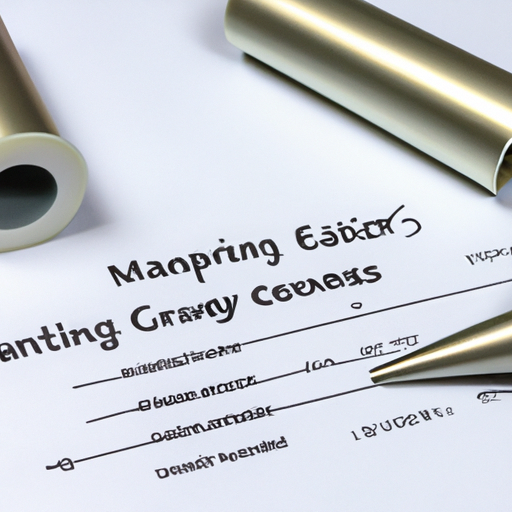What are the Manufacturing Processes of the Latest Capacitor Formula?
I. Introduction
Capacitors are fundamental components in modern electronics, serving as energy storage devices that can release energy quickly when needed. They play a crucial role in various applications, from power supply smoothing to signal coupling and decoupling in circuits. As technology advances, so does the need for more efficient and reliable capacitors. This blog post will explore the latest manufacturing processes of capacitors, highlighting the innovations and advancements that have emerged in recent years.
II. Types of Capacitors
Capacitors come in various types, each designed for specific applications and performance characteristics. The most common types include:
A. Electrolytic Capacitors
These capacitors are polarized and typically used in power supply applications due to their high capacitance values.
B. Ceramic Capacitors
Known for their stability and reliability, ceramic capacitors are widely used in high-frequency applications.
C. Film Capacitors
These capacitors are made from thin plastic films and are known for their low losses and high insulation resistance.
D. Tantalum Capacitors
Tantalum capacitors offer high capacitance in a small package and are often used in compact electronic devices.
E. Supercapacitors
Also known as ultracapacitors, these devices can store large amounts of energy and are used in applications requiring rapid charge and discharge cycles.
F. Emerging Capacitor Technologies
New materials and designs are being explored to enhance performance, such as organic capacitors and nanostructured capacitors.
III. Overview of Capacitor Manufacturing Processes
The manufacturing of capacitors involves several critical steps, starting with the selection of raw materials.
A. Raw Material Selection
The choice of materials is vital for capacitor performance. Key materials include:
1. Dielectric Materials
These materials, which can be ceramic, plastic, or electrolytic, determine the capacitor's ability to store charge.
2. Conductive Materials
Typically metals like aluminum or tantalum, these materials form the electrodes of the capacitor.
B. Preparation of Materials
Before manufacturing, materials undergo purification and mixing processes to ensure quality.
1. Purification Processes
Raw materials are purified to remove impurities that could affect performance.
2. Material Mixing and Compounding
Materials are mixed to achieve the desired properties, such as dielectric strength and conductivity.
IV. Manufacturing Processes for Different Capacitor Types
Each type of capacitor has its unique manufacturing process, tailored to its specific requirements.
A. Electrolytic Capacitors
The manufacturing of electrolytic capacitors involves several key steps:
1. Anodization Process
Anodization creates a thin oxide layer on the aluminum foil, which acts as the dielectric.
2. Electrolyte Filling
The capacitor is filled with an electrolyte solution, which enhances its capacitance.
3. Sealing and Packaging
Finally, the capacitor is sealed to prevent leakage and packaged for distribution.
B. Ceramic Capacitors
The production of ceramic capacitors includes:
1. Powder Preparation
Ceramic powders are prepared and mixed with additives to enhance performance.
2. Die Pressing and Sintering
The powder is pressed into shape and then sintered at high temperatures to form a solid dielectric.
3. Electrode Application
Electrodes are applied to the ceramic body, completing the capacitor.
C. Film Capacitors
Film capacitors are manufactured through:
1. Film Extrusion
Plastic films are extruded to the desired thickness.
2. Metallization
A thin layer of metal is deposited on the film to form the electrodes.
3. Winding and Cutting
The metallized film is wound into a roll and cut to the required size.
D. Tantalum Capacitors
The process for tantalum capacitors involves:
1. Tantalum Powder Preparation
Tantalum powder is processed to achieve the desired particle size and purity.
2. Sintering and Anode Formation
The powder is sintered to form a solid anode, which is then oxidized to create the dielectric layer.
3. Electrolyte Application
An electrolyte is applied to enhance the capacitor's performance.
E. Supercapacitors
The manufacturing of supercapacitors includes:
1. Electrode Preparation
Electrodes are made from high-surface-area materials to maximize energy storage.
2. Electrolyte Selection and Application
The choice of electrolyte is crucial for performance, and it is applied to the electrodes.
3. Assembly and Packaging
The components are assembled into a cell and packaged for use.
V. Quality Control and Testing
Quality control is essential in capacitor manufacturing to ensure reliability and performance.
A. Importance of Quality Control
Quality control processes help identify defects and ensure that capacitors meet industry standards.
B. Testing Methods for Performance and Reliability
Capacitors undergo various tests, including capacitance measurement, leakage current testing, and temperature cycling.
C. Standards and Certifications
Manufacturers adhere to international standards, such as ISO and IEC, to ensure product quality and safety.
VI. Innovations in Capacitor Manufacturing
Recent advancements in capacitor manufacturing have focused on improving performance and sustainability.
A. Advances in Materials Science
New materials, such as graphene and organic compounds, are being explored to enhance capacitance and reduce size.
B. Automation and Industry 4.0
The integration of automation and smart manufacturing technologies has improved efficiency and reduced production costs.
C. Environmental Considerations and Sustainability
Manufacturers are increasingly focusing on sustainable practices, such as recycling materials and reducing waste.
VII. Conclusion
In summary, the manufacturing processes of capacitors have evolved significantly, driven by advancements in materials science and technology. As the demand for more efficient and reliable capacitors continues to grow, manufacturers are adopting innovative techniques to enhance performance while ensuring quality and sustainability. The future of capacitor manufacturing looks promising, with ongoing research and development paving the way for new technologies that will play a vital role in the ever-evolving electronics landscape. Capacitors will remain essential components in a wide range of applications, from consumer electronics to renewable energy systems, underscoring their importance in modern technology.






